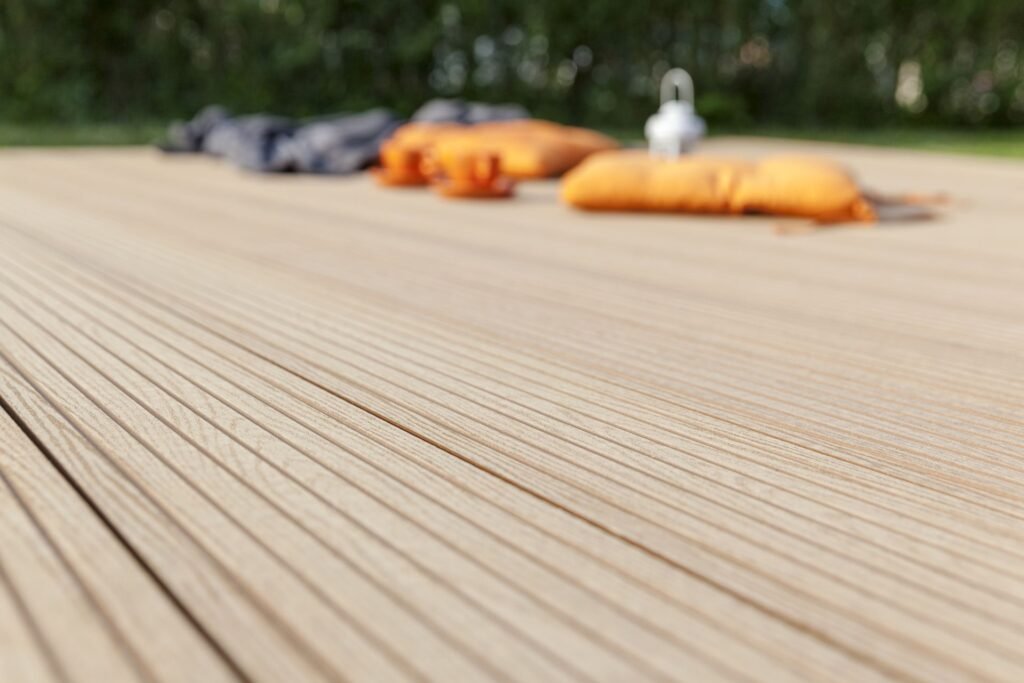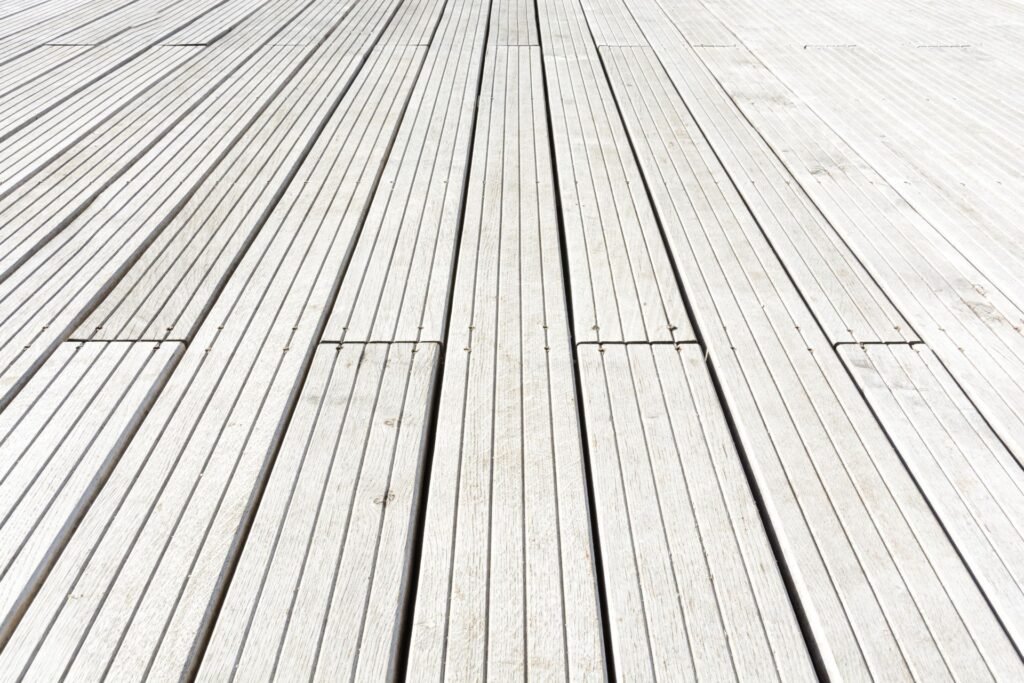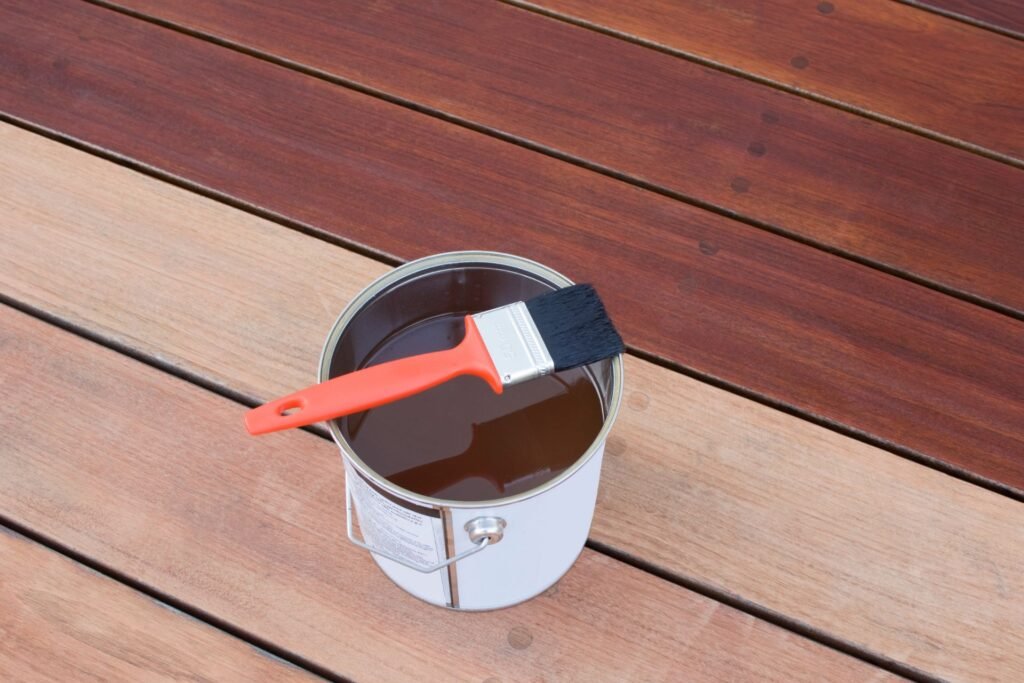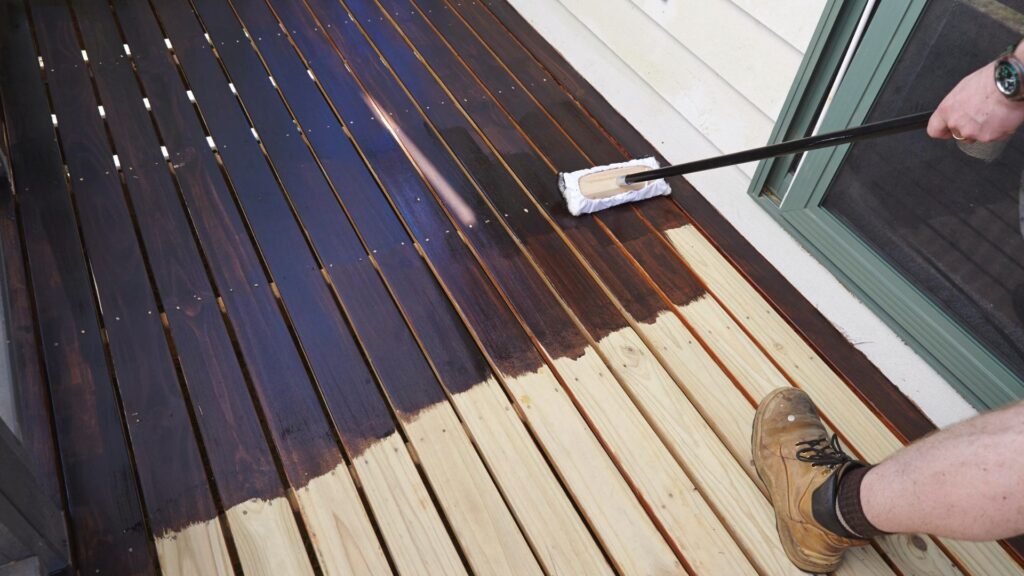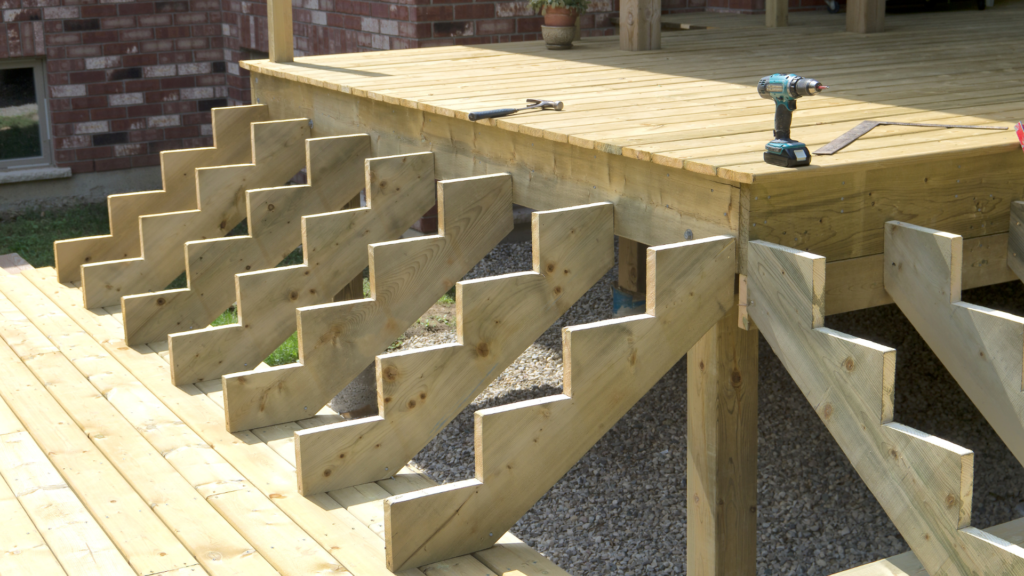Ultimate Guide To Composite Decking Prices Australia
Welcome to your comprehensive guide on composite decking prices in Australia. As you explore the possibility of enhancing your outdoor living space with composite decking, understanding the costs involved is crucial for effective planning and decision-making. In this blog post, we will delve into the various materials used in composite decking, the factors that influence pricing, and offer a detailed cost comparison between composite and traditional wood decking. Additionally, we will provide insights on budgeting for your project, discuss maintenance and long-term care, and share tips on choosing the right composite decking for your home. By the end of this article, you’ll be well-equipped to make informed decisions about adding composite decking to your property.
On average, the cost of composite decking in Australia ranges from $100 to $350 per square meter. This price variation depends on several factors, including the quality of materials, the size of the deck, design complexity, and whether the installation is DIY or professionally done. Understanding these elements will help you effectively budget and choose the right composite decking for your home, ensuring a balance of aesthetics, durability, and value.
- What Is Composite Decking?
- Factors Influencing The Cost Of Composite Decking In Australia
- Average Prices Of Composite Decking Across Australia
- Cost Comparison: Composite Vs. Wood Decking
- How To Budget For Your Composite Decking Project
- Maintenance And Long-Term Care Of Composite Decking
- Choosing The Right Composite Decking For Your Home
- FAQs: About Composite Decking Prices In Australia
- Conclusion
What Is Composite Decking?
Composite decking represents a modern alternative to traditional wooden decking and has become increasingly popular for outdoor spaces. This guide explains what composite decking is, how it differs from traditional wood decking, and why it might be the right choice for your next home improvement project.
Definition and Composition
Composite decking is a man-made building product that combines wood fibers and recycled plastics to create a material that mimics the appearance of wood while delivering enhanced performance benefits. This hybrid material is designed to look like natural wood but stands out due to its durability and low maintenance requirements.
The core materials used in composite decking typically include recycled high-density polyethylene (HDPE), which comes from items like shampoo bottles or milk jugs, and wood fibers, which are often sourced from remnants of lumber mills. These materials are carefully combined and heated to form boards that are both eco-friendly and robust.
Comparison to Traditional Wood Decking
While traditional wood decking has been a long-time favorite due to its natural look and initial cost-effectiveness, composite decking offers distinct advantages that make it a more suitable choice for many homeowners. Here’s how composite decking stands out:
1. Durability: Unlike traditional wood, composite decking is resistant to warping, rotting, and insect damage. Its composite nature makes it exceptionally durable against the elements, making it ideal for outdoor environments.
2. Maintenance: Wood decking requires regular treatment with stains, sealers, and other chemicals to maintain its appearance and longevity. In contrast, composite decking needs minimal upkeep—usually just a simple wash with soap and water. This ease of maintenance saves time and money in the long run.
3. Aesthetics: Composite decking comes in a variety of colors and finishes, which are manufactured to stay vibrant and consistent over time without the fading, staining, or painting required by wood decks. This ensures a lasting, beautiful appearance with less effort.
Advantages Of Traditional Materials
Choosing composite decking over traditional materials offers numerous benefits. The combination of recycled plastics and wood fibers makes it an environmentally friendly choice, reducing the amount of waste sent to landfills and the demand for virgin timber. Furthermore, its increased lifespan and minimal maintenance requirements provide long-term savings and reduce the overall carbon footprint of your decking project.
In conclusion, composite decking is an excellent choice for homeowners seeking a durable, low-maintenance, and attractive alternative to traditional wood decking. Its sustainable materials and advanced manufacturing processes help not only in creating a visually appealing outdoor space but also in promoting a greener construction approach. Whether you’re building a new deck or renovating an existing one, composite decking offers a compelling array of benefits that are worth considering.

Factors Influencing The Cost Of Composite Decking In Australia
When planning to install composite decking in Australia, understanding the various factors that affect pricing is crucial for budgeting effectively. Composite decking is a popular choice due to its durability, low maintenance, and aesthetic appeal. Here, we break down the key elements that influence the cost, helping you make an informed decision.
1. Size of the Deck
The overall cost of composite decking is significantly impacted by the size of the deck. Generally, decking is priced per square meter, so larger decks will naturally require a higher investment. When calculating your budget, measure the total square footage of the planned deck. This will give you a solid foundation for estimating the material cost, as larger areas not only use more materials but also may require additional structural support, which can increase the price.
2. Quality of Materials
Composite decking comes in a range of quality options from low to high-end materials. Lower-quality composites are more affordable but typically have a shorter lifespan and less resistance to wear and tear. Mid-range materials offer a balance between cost and durability, making them a popular choice for many homeowners. High-end composites, while more expensive, provide superior durability, aesthetics, and a longer warranty. The choice of material quality can affect not only the initial cost but also the long-term value through maintenance savings and lifespan.
3. Complexity of Design
The design of your deck can significantly influence the final cost. Simple, rectangular decks are generally more cost-effective to build. Intricate designs with multiple levels, curves, or angles require more planning and cutting, which can increase labor and material costs. If you desire a unique or complex design, it’s essential to prepare for higher expenses due to the increased time and skill required to construct these features.
4. Installation Costs
You can choose between DIY installation and professional installation for your composite decking. DIY can reduce costs significantly but requires a good level of skill to ensure the decking is installed correctly. Errors made during DIY installations can lead to increased costs down the line due to repairs or adjustments. Professional installation, on the other hand, although more costly upfront, ensures that the deck is built securely and with expert craftsmanship. This option often comes with the added benefit of warranties on both materials and labor.
5. Additional Features
Extras such as railings, steps, built-in seating, or custom finishes can enhance the functionality and appearance of your deck but also add to the cost. Railings, for example, are often required for safety in raised decks but vary widely in price depending on materials and designs. Similarly, adding steps or custom finishes such as staining or painting can increase the overall costs. When planning your deck, consider which features are essential and which are optional luxuries.
The cost of composite decking in Australia is influenced by various factors, including deck size, material quality, design complexity, installation choices, and additional features. By understanding these elements, you can better manage your project’s budget and build a deck that meets both your aesthetic and financial requirements. When planning your decking project, it’s advisable to get quotes from several contractors to compare prices and options, ensuring you receive the best value for your investment.
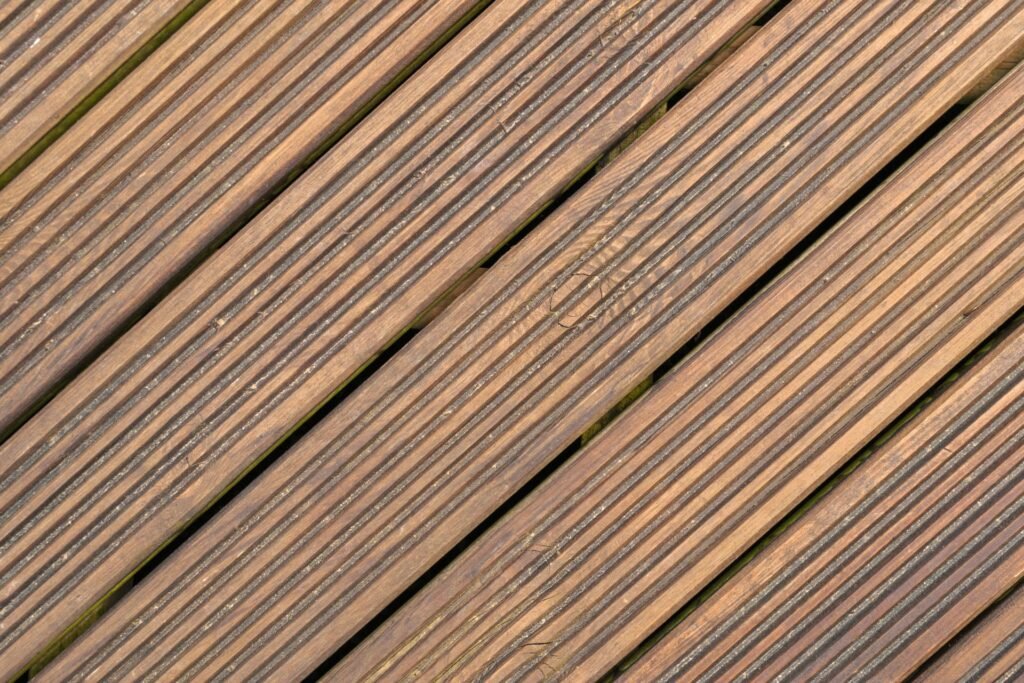
Average Prices Of Composite Decking Across Australia
When considering upgrading your outdoor living spaces, composite decking is a popular choice due to its durability and low maintenance requirements. In this section, we’ll explore the current prices of composite decking materials across major Australian cities—Sydney, Melbourne, Brisbane, and Perth. We’ll also delve into the reasons behind regional variations in pricing.
Current Prices Across Major Cities
Composite decking prices in Australia can vary significantly depending on your location. Here’s a breakdown of the average costs you might expect in each major city:
Sydney: Prices in Sydney typically range from $100 to $350 per square meter. This variation depends on the quality and specific brand of composite decking.
Melbourne: In Melbourne, homeowners might see slightly lower prices, ranging from $90 to $330 per square meter.
Brisbane: Brisbane offers competitive pricing, with costs ranging approximately from $95 to $320 per square meter.
Perth: Prices in Perth are comparable to those in Brisbane, usually between $100 and $310 per square meter.
These prices include both the cost of materials and installation fees, which can vary based on the complexity of the project.
Regional Variations in Pricing
The differences in composite decking prices across Australia can be attributed to several factors:
1. Availability of Materials: The proximity of supply centers to each city can affect the availability of different brands and types of composite decking. Cities closer to major manufacturing hubs may have lower prices due to reduced transportation costs.
2. Shipping Costs: Transportation and shipping costs play a significant role in the final price of composite decking materials. For cities that are farther from manufacturing plants and suppliers, these costs can be higher, which is often passed on to the consumer.
3. Local Demand: The level of demand in each region can also influence prices. In cities with higher demand for composite decking, prices might be driven up due to the competitive market.
4. Installation Costs: Labour costs can vary widely between different cities. Urban areas with a higher cost of living, such as Sydney, might see higher installation costs compared to other regions.
For Australian homeowners considering composite decking, understanding the regional pricing variations is crucial. By comprehensively analyzing the costs in different cities, you can better budget for your decking project. Keep in mind that while the initial investment might be significant, the long-term benefits of durability and reduced maintenance can offset these initial costs.
When planning your decking project, it’s advisable to get multiple quotes from local contractors to ensure you are getting the best deal possible. This will also provide a more accurate reflection of the current market prices in your specific area. Remember, choosing the right type of composite decking not only enhances the beauty of your home but also adds to its long-term value.
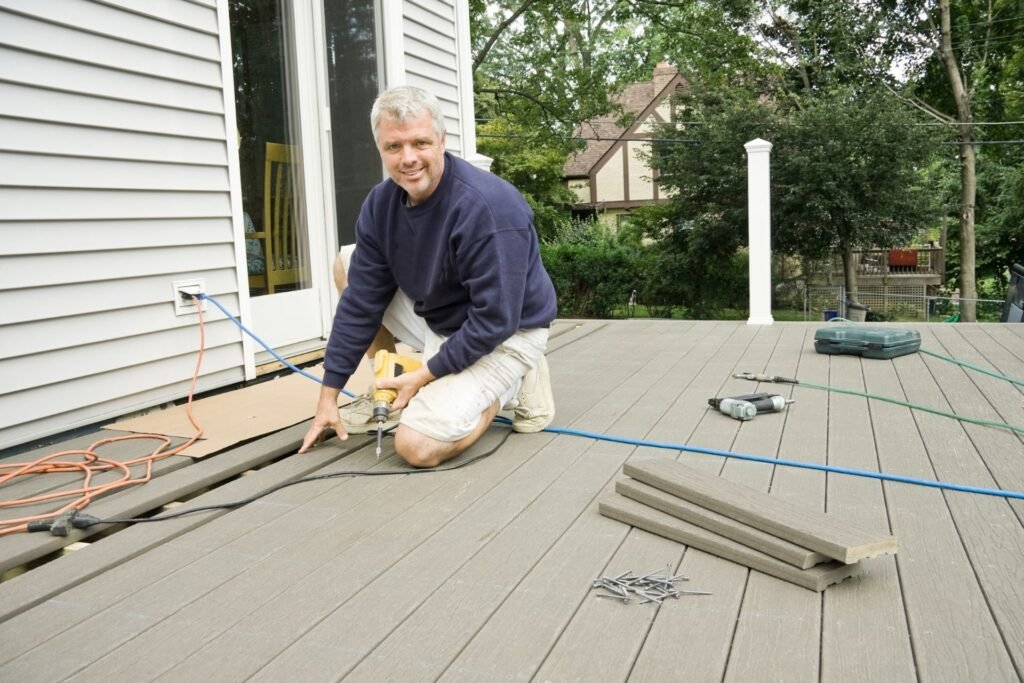
Cost Comparison: Composite Vs. Wood Decking
When considering a new deck, the material you choose is crucial not only for the aesthetics but also for the cost implications—both immediate and long-term. In this guide, we delve into a thorough cost comparison between composite and wood decking, considering initial investments, maintenance expenses, durability, and overall lifespan.
Initial Costs vs. Long-term Savings
Composite Decking: Initial Costs
Composite decking initially costs more than wood decking. This is due to the materials being a blend of wood fibers and plastics, which are engineered for durability and longevity. The upfront cost, however, can be seen as an investment. Prices vary depending on the brand and quality, but generally, expect to pay between 20% to 50% more for composite than for traditional wood decking.
Wood Decking: Initial Costs
Wood decking, such as pressure-treated wood, is less expensive at the outset. It’s a popular choice for those looking at the immediate cost without a long-term perspective on maintenance and replacement costs. Cedar and redwood, though pricier than pressure-treated wood, are still less expensive upfront than most composite options.
Long-term Savings
Despite the higher initial cost, composite decking often leads to savings over time. This is due to minimal maintenance needs and no requirement for staining, sealing, or painting. Wood decks, while cheaper initially, require regular treatments and can deteriorate quicker without proper care, leading to higher costs in the long run.
Maintenance Costs Over Time
Composite Decking: Maintenance Costs
Composite decking is highly praised for its low maintenance requirements. It does not need staining, sealing, or painting—ever. It’s also resistant to rot, decay, and insect infestation. The maintenance might only involve a simple wash with soap and water to keep it looking new.
Wood Decking: Maintenance Costs
Wood decking will generally require annual or biannual treatments to protect against weather elements, rot, and insects. This includes costs for cleaners, stains, and sometimes professional maintenance services. These costs can add up significantly over the lifespan of the deck.
Durability and Lifespan Comparisons
Composite Decking: Durability and Lifespan
Composite decking is designed to last. Most brands offer warranties ranging from 25 to 50 years, reflecting their durability and long-term performance. This type of decking is less prone to the warping, cracking, or splintering that can affect wood decks.
Wood Decking: Durability and Lifespan
The lifespan of wood decking varies significantly depending on the type of wood and maintenance effort. Pressure-treated wood can last about 15 to 20 years with diligent maintenance, while higher-end woods like cedar and redwood can extend a bit longer. However, without consistent upkeep, the lifespan can be much shorter due to susceptibility to environmental damage.
Choosing between composite and wood decking involves weighing initial costs against long-term benefits. If upfront cost is your primary concern, wood decking may be the way to go. However, for those looking at the long-term picture, considering both financial and maintenance aspects, composite decking could be a more cost-effective and hassle-free option. Regardless of your choice, both materials can enhance the beauty and functionality of your outdoor living space, proving to be a valuable home investment.
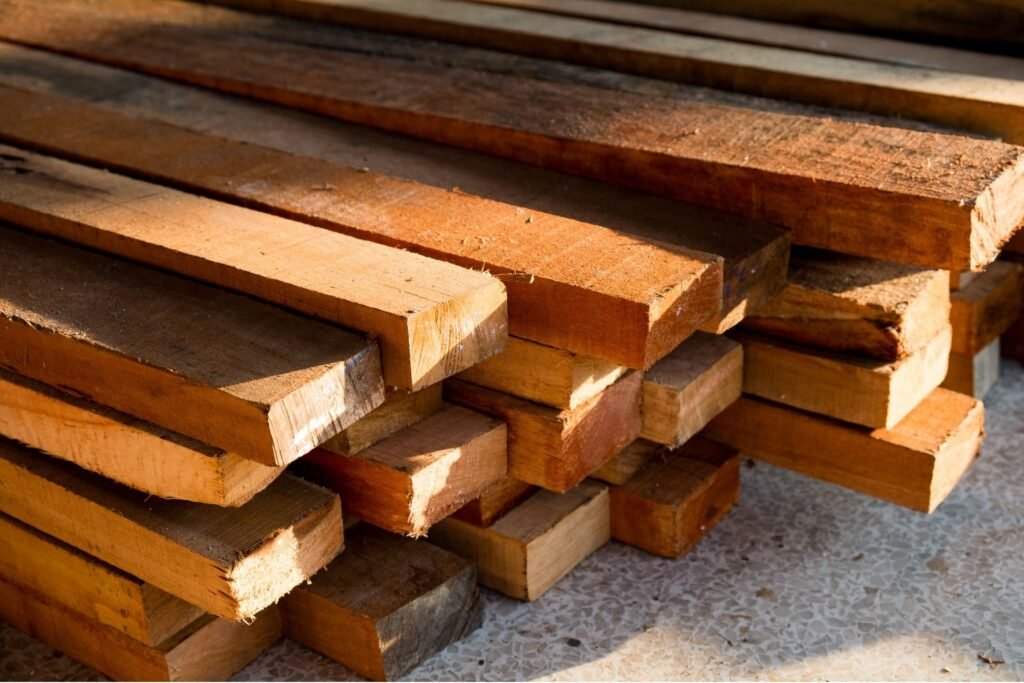
How To Budget For Your Composite Decking Project
Creating an accurate budget for your composite decking project is crucial to avoid unexpected costs and to ensure the process goes smoothly from start to finish. Here’s a comprehensive guide to help you manage your finances effectively while planning for a beautiful and functional outdoor space.
1. Setting a Realistic Budget
When planning your composite decking project, it’s important to first establish a clear and realistic budget. Start by researching the average costs of materials and labor in your area. Composite decking prices can vary widely depending on the quality and features of the material, such as UV protection or added textures that mimic real wood.
Include a detailed list of all the components needed for your deck, such as boards, railings, fasteners, and understructure materials. Don’t forget to factor in the cost of tools if you plan on doing it yourself, or the cost of labor if you intend to hire professionals.
2. Understanding Hidden Costs and Overlooked Expenses
Several potential hidden costs can affect your overall budget:
Permits: Before starting your project, check with your local building authority to determine if you need a permit for your deck, which can add unexpected costs.
Preparation Work: If your project site requires additional preparation, such as leveling the ground or removing existing structures, this could significantly impact your budget.
Additional Features: Features like built-in lighting, benches, or multiple levels can also drive up costs. It’s essential to decide on these elements early in the planning stage.
3. Financing Options and Payment Plans
If your dream deck exceeds your available budget, consider exploring financing options. Many companies offer financing plans that allow you to pay for your deck over time. Additionally, home improvement loans or tapping into home equity can be viable options to spread out the expense.
Planning and budgeting for a composite decking project involves thorough research and consideration of all possible costs. By setting a realistic budget, accounting for potential hidden fees, and exploring various financing options, you can ensure that your decking project is both financially manageable and successful.
Implementing these steps will help you avoid surprises and will pave the way for a smooth decking installation. Remember, a well-planned budget is key to the successful realization of your composite deck, enhancing your home’s value and your enjoyment of your outdoor space.
For more detailed advice on specific costs and additional tips on composite decking, visiting local suppliers or consulting with decking professionals can provide tailored information relevant to your area and needs.
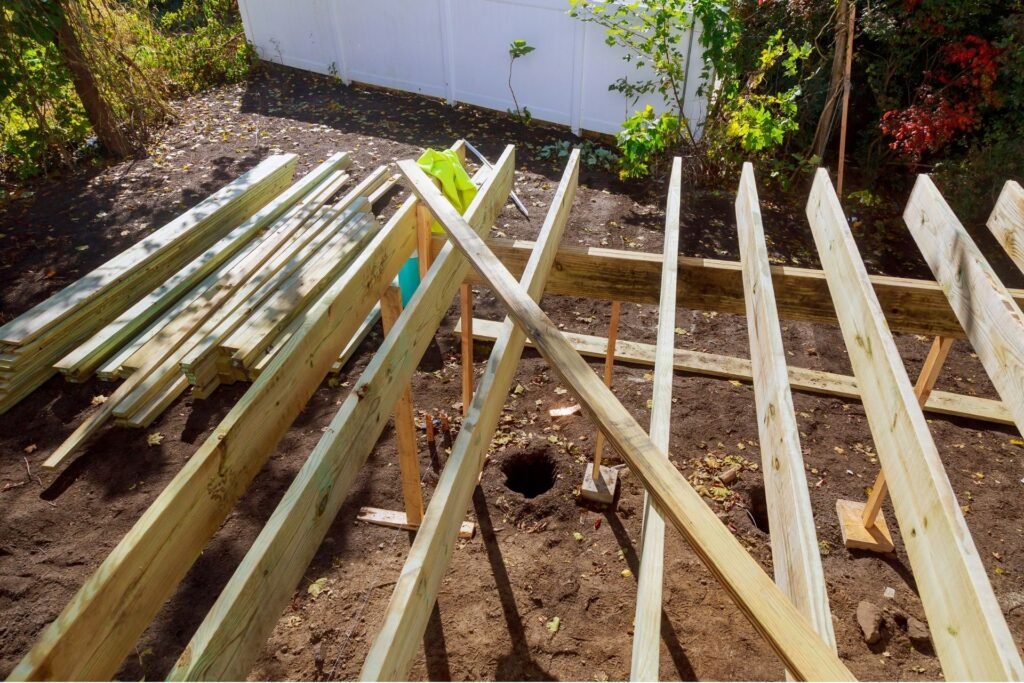
Maintenance And Long-Term Care Of Composite Decking
Composite decking has become increasingly popular for outdoor spaces due to its durability and aesthetic appeal. This type of decking is a fantastic alternative to traditional wood as it often requires less maintenance and holds up better against the elements. However, to keep it looking pristine and to extend its lifespan, a bit of care and regular maintenance is necessary. Here’s a comprehensive guide on maintaining your composite decking to ensure it lasts for many years.
Understanding the Minimal Maintenance Needs of Composite Decking
One of the biggest advantages of composite decking is its minimal maintenance requirements compared to wood decking. Composite decks are made from a blend of wood fibers and plastic, which makes them resistant to rot, warping, and splintering. Unlike wood, composite decking doesn’t require staining, sealing, or painting. However, this doesn’t mean it’s entirely maintenance-free.
To maintain the beauty and integrity of your composite deck, it’s important to perform regular cleanings and inspections. This not only keeps the deck looking great but also extends its service life. Regular checks will help catch any issues early before they can develop into costly problems.
Tips on Cleaning and Caring for Composite Decking
To ensure the longevity of your composite decking, here are some practical tips on how to care for it effectively:
1. Regular Cleaning: Sweep your deck regularly to remove dirt and debris. This is particularly important in the autumn when leaves may gather and trap moisture on the deck surface.
2. Washing: At least twice a year, wash your deck to remove any accumulated dirt. You can use a soap-and-water solution with a soft-bristle brush to gently scrub the surface. Avoid using a power washer as it can damage the surface of the composite material.
3. Spot Removal: For oil, grease, or other stubborn stains, use a commercial composite deck cleaner designed for these types of stains. Apply the cleaner according to the manufacturer’s instructions and scrub gently to avoid damaging the deck’s finish.
4. Prevent Mold and Mildew: Although composite decking is resistant to mold and mildew, it’s still important to prevent buildup. Ensure that your deck has proper drainage and airflow to reduce moisture buildup, which is a prime breeding ground for mold and mildew.
5. Avoid Damaging Chemicals: When de-icing in the winter, opt for calcium chloride or rock salt to melt the snow and ice. Avoid using sand or any product containing colorants, as these can stain and scratch the deck surface.
6. Furniture and Accessories: Use protective pads under outdoor furniture to avoid scratches. Rearrange furniture periodically to prevent discoloration from the sun and to wear the deck evenly.
By following these maintenance tips, your composite decking will continue to look great and serve as a functional outdoor living space for years to come. Regular maintenance not only enhances the appearance but also preserves the material integrity, ensuring that your investment remains robust and beautiful.

Choosing The Right Composite Decking For Your Home
When it comes to enhancing your outdoor living space, selecting the right composite decking is crucial. Not only does it add aesthetic appeal to your home, but it also offers durability and ease of maintenance. Whether you’re refurbishing an old deck or building a new one, understanding the key factors to consider and the reputable brands available in Australia will help you make the best choice for your needs.
Factors to Consider When Selecting Composite Decking
Color: The color of your decking plays a significant role in complementing the exterior of your home. Composite decking comes in a wide range of colors, from natural browns and grays to more vibrant shades. Consider the color schemes of your home’s exterior and landscaping to choose a hue that harmonizes beautifully with your surroundings.
Texture: The texture of composite decking affects both its aesthetic and practical aspects. Some textures mimic the natural grain of wood, offering a traditional look, while others might be smoother and more modern. Textured surfaces can also provide better slip resistance, which is a crucial safety feature for any outdoor area.
Warranty: Always check the warranty offered with composite decking products. A good warranty not only provides peace of mind but also indicates the manufacturer’s confidence in the durability of their product. Look for warranties that cover aspects like fading, stain resistance, and structural integrity over a significant period.
Recommendations on Reputable Brands or Products Available in Australia
Several high-quality composite decking brands are available in Australia, known for their durability, aesthetic appeal, and excellent warranties. Here are a few recommended brands:
1. Trex Decking: Trex is one of the most popular composite decking brands worldwide and offers high-quality products with excellent warranties. Their decking is made from 95% recycled materials, making it an environmentally friendly option.
2. ModWood: Australian-made ModWood decking is designed specifically to withstand Australia’s harsh climates. It requires minimal maintenance and is resistant to warping, fading, and staining.
3. TimberTech: TimberTech offers composite decking that looks and feels like natural timber but doesn’t require the maintenance associated with traditional wood decking. Their products come with robust warranties and are available in various styles and colors.
4. NewTechWood: Known for its innovation in outdoor decking, NewTechWood offers products that feature a unique coating on all four sides, providing superior protection against the elements and making them ideal for Australian weather conditions.
When choosing composite decking, it’s essential to consider how each option aligns with your specific requirements, such as budget, aesthetic preferences, and the climatic conditions of your locale. Visiting local suppliers and seeing the materials in person can also provide a better sense of the product’s look and feel, helping you make a more informed decision.
In summary, the right composite decking will enhance your home’s outdoor space while offering ease of maintenance and longevity. By carefully considering factors like color, texture, and warranty, and opting for reputable brands, you can ensure that your decking choice meets both your aesthetic and functional needs.
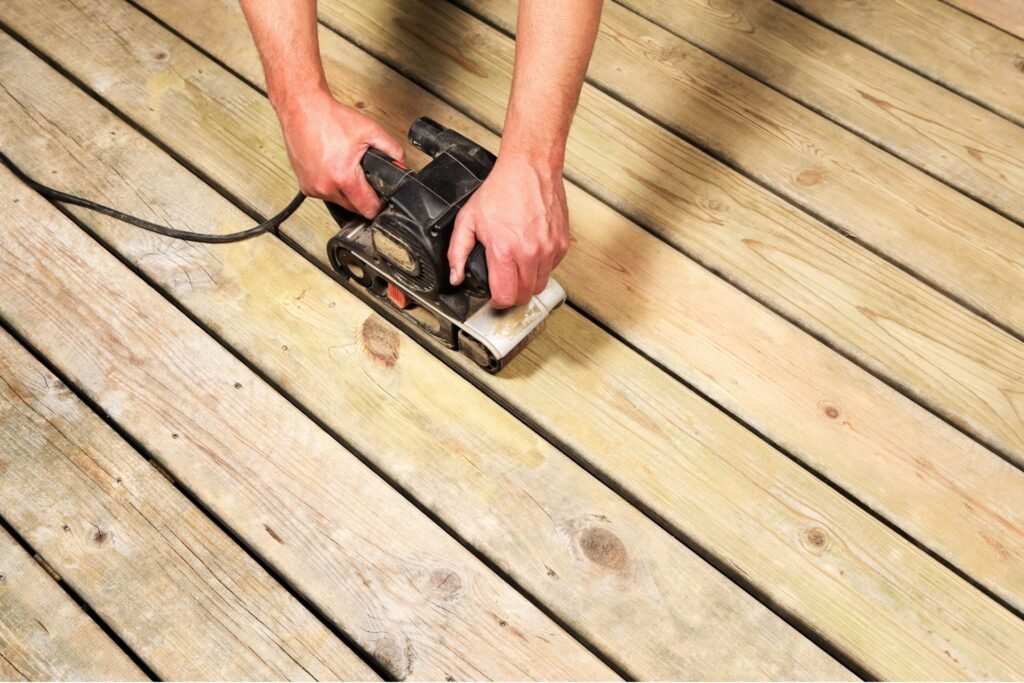
FAQs: About Composite Decking Prices In Australia
Conclusion
When planning a decking project, grasping the nuances of composite decking prices is crucial for making an informed decision that suits both your budget and project requirements. Composite decking offers a splendid balance of beauty and practicality, ensuring that your outdoor space not only looks appealing but also stands up to the elements with minimal maintenance. To truly appreciate the value it brings, it’s advisable to consider both its aesthetic appeal and functional benefits. Taking the next step involves reaching out to a local supplier for a detailed quote or visiting a showroom to see the variety of options available firsthand. This approach not only helps you visualize the potential of your outdoor space but also ensures you make the best choice for your specific needs.
About the Author:
Mike Veail is a recognized digital marketing expert with over 6 years of experience in helping tradespeople and small businesses thrive online. A former quantity surveyor, Mike combines deep industry knowledge with hands-on expertise in SEO and Google Ads. His marketing strategies are tailored to the specific needs of the trades sector, helping businesses increase visibility and generate more leads through proven, ethical methods.
Mike has successfully partnered with numerous companies, establishing a track record of delivering measurable results. His work has been featured across various platforms that showcase his expertise in lead generation and online marketing for the trades sector.
Learn more about Mike's experience and services at https://theleadguy.online or follow him on social media:

